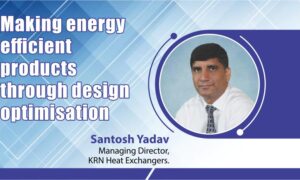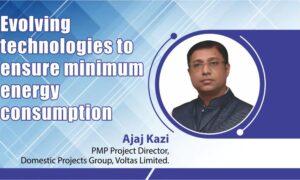Tendency towards natural refrigerants is underway, driven by regulations.
In an exclusive interaction with Thermal Control Business Update, Marco Piovan, Application Manager – Industrial HVAC, revealed the inter relationship of HVAC system and global warming, refrigerants as well as temperature and humidity for food preservation.
What are the current market trends for chillers and cooling technologies?
Efficiency and connectivity are the two driving forces in the HVAC systems in general and this also applies to the chiller market. Despite being broad concepts, widely discussed and applied in other markets, such as consumer electronics and grid management and integration, there are still plenty of opportunities for their application in the HVAC industry.
What new cooling technology opportunities are available to provide space cooling and process cooling solutions?
It is not so much about breakthrough technologies but rather the application of current technologies available in other industrial or commercial industries. For example, Apple did not invent ‘Siri’; it was a creation of the US Defence Department and then later made available for commercial use.
What are the main chiller technologies and refrigerants used in supermarkets for preserving perishable goods?
This varies across countries, as constraints and standards for the refrigerants are different from region to region. In general, there is a tendency towards natural refrigerants underway, driven by regulations. Nevertheless, anywhere alternatives to natural refrigerants are permitted and higher system efficiency can be achieved, alternatives to natural refrigerants still make sense. Another fundamental aspect is humidity controls. Despite this, sometimes it is being perceived as secondary to temperature control, however, this is not the case when it comes to food preservation. Therefore, it is worth keeping in mind that temperature and humidity should be managed and controlled together, at all times.
Are rising temperatures resulting from global warming driving the demand for cooling equipment, more than in the past?
Certainly, yes. Twenty years ago almost no-one thought about installing an air conditioner in their home in Germany, whilst today most people do. It’s a combination of higher expectations from consumers and higher temperatures. However, more HVAC systems means more global warming, as more heat will be transferred to the earth’s atmosphere, so we need to be aware that more comfort comes at the expense of global warming. So does the longer shelf life of food.
Do you think chiller manufacturers are also looking into integrating renewable energy systems, such as thermal hybrid panels?
Why not, it is obvious. Generally chillers for large systems are installed on large surfaces, such as a rooftop or an open area. Often, a canopy protects against solar radiation and a worsening of condensing conditions; the space can thus be easily covered by solar panels. Or, in a wastewater system the condenser outlet could be integrated in the water loop for the thermal stage of the solar panels. Infinite design options are available; it’s just a matter of finding the best fit for the specific site conditions.
Cookie Consent
We use cookies to personalize your experience. By continuing to visit this website you agree to our Terms & Conditions, Privacy Policy and Cookie Policy.















